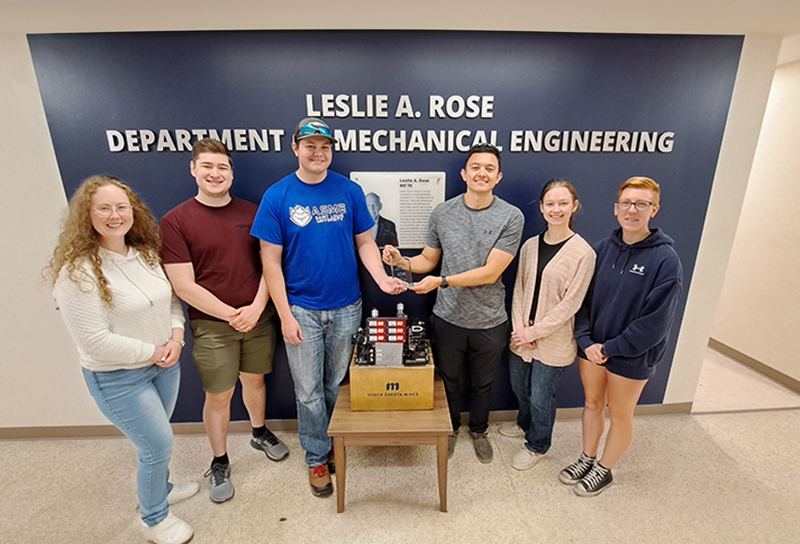South Dakota Mines ASME Team Earns Second Place in Annual Student Design Competition

Countless hours of planning, designing, building and troubleshooting paid off for the South Dakota Mines chapter of the American Society of Mechanical Engineers (ASME) as they took home second place out of more than 20 teams from across the United States during the annual ASME Student Design Competition.
The ASME Student Design Competition provides a platform for student members to present their solutions to a range of design problems - from everyday household tasks to groundbreaking space exploration. Each team is required to design, construct and operate a prototype that meets the different requirements each year.
This year’s challenge was to design, fabricate and test a device that can rapidly and accurately sort and transport ball bearings of different materials and sizes.
"The ASME Student Design Competition (SDC) is a unique challenge in that it is a completely new competition objective each year. That allows teams to apply the engineering design process to a particular problem without any prior experience in a similar challenge,” said Jason Ash, Ph.D., associate professor in the Leslie A. Rose Department of Mechanical Engineering. “A significant strength of the team was being able to collaborate in a multidisciplinary senior capstone design team experience.”
The Mines team, Ball Bearing Buffoons, is one of five Mines teams that have placed in the top two within the last 20 years.
“A common trait of all these top teams was getting a prototype operational early and having over a month to make adjustments to improve the reliability of the system before competition,” Ash said.
Jessie Collins, senior mechanical engineering major and Ball Bearing Buffoons team lead, said they started planning in September 2024 after senior design projects were assigned. “That early groundwork was crucial, giving us the full second semester to focus on manufacturing, testing and fine-tuning our final system,” she said. “It was rewarding to see our hard work pay off when everything came together during the competition.”
While they had some high-stress moments, the experiences brought the team closer and made the success more meaningful, Collins said. "It wasn't just about the technical execution; it was about how we communicated, adapted and supported each other,” she said.
For Collins, the entire experience, from planning to competition, reshaped how she sees engineering beyond the classroom. “It helped me develop technical skills like system integration and data analysis, but more importantly, it taught me how to collaborate effectively and manage a complex project with real-world constraints,” she said. “It’s one thing to learn theory, but applying it in a competitive, high-stakes environment really prepares you for the demands of a professional engineering job.”
Collins noted that the team's success was made possible by the support of advisors Ash; Brian Butterfield, a lecturer in the electrical engineering and computer science department; and Trevor Keierleber, a graduate student in the computer science and engineering accelerated master’s program, as well as funding from the Mines ASME Student Section and the ASME Nebraska Section.